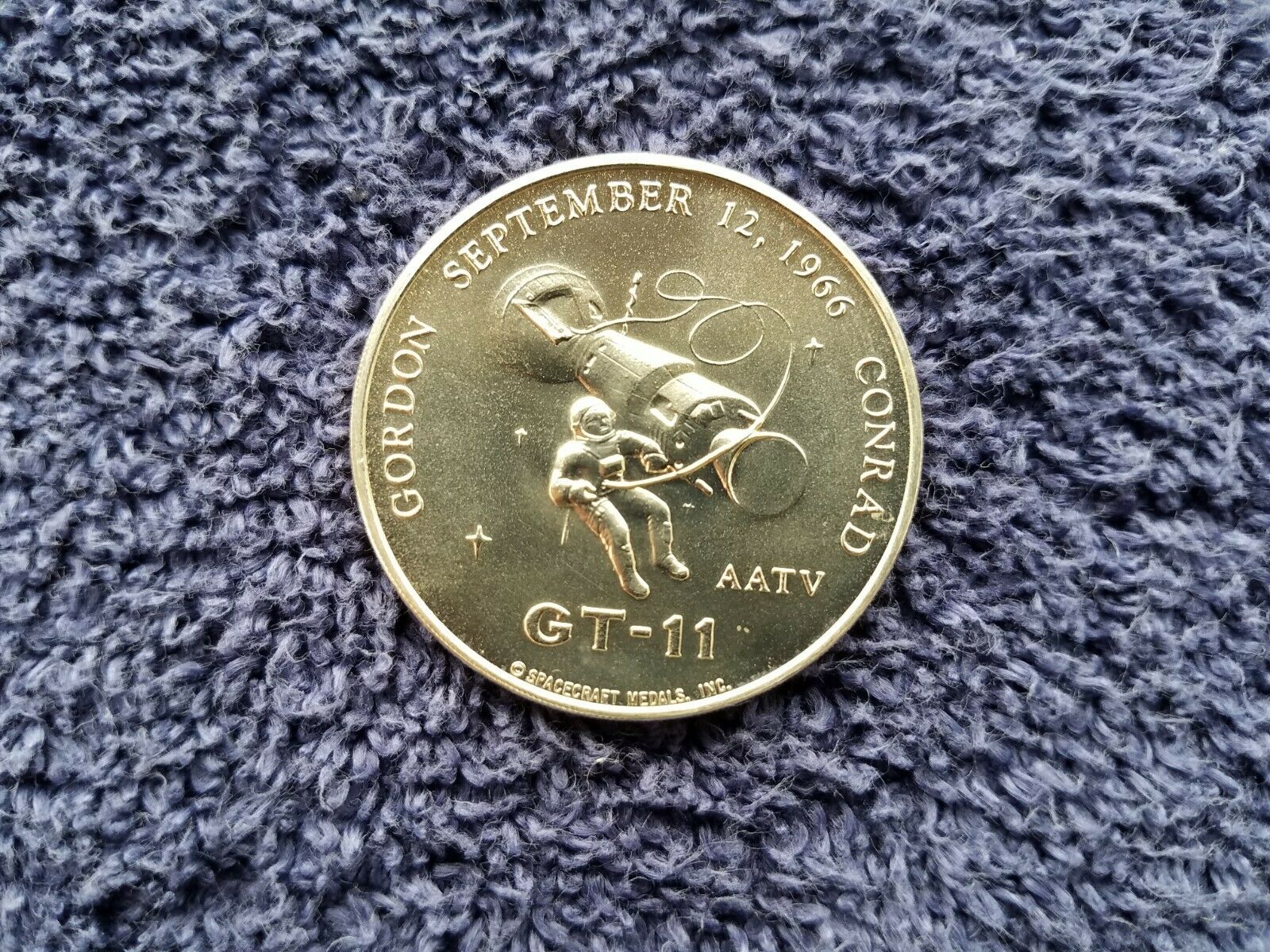-40%
NASA Gemini-Titan II Program Medals for missions GT-7/6, GT-10, and GT-11
$ 6.6
- Description
- Size Guide
Description
NASA Gemini-Titan II Program Medals for missions GT-7/6, GT-10, and GT-11Three medals commemorating the American Space Race of the 1960’s.
NASA’s
Gemini-Titan II (GT) programs, missions GT-7/6, GT-10, and GT-11
All medals were struck by the Franklin Mint for the Spacecraft Medals, Inc. The Franklin Mint copyright symbol is present just below the word GEMINI on the reverse of all three medallions
The name Spacecraft Medals, Inc., a vintage creator of medals within NASA and the Space Exploration community is present just below the mission callouts GT-10 and GT-11 only, though all medallions are from the same set struck for Spacecraft Medals, Inc. by the Franklin Mint. There Mint Mark is present on the reverse side, just below the word GEMINI on each medal
All medals are
1½" (38mm) in diameter, all Rim’s/Edges are Milled, a sign of High Quality
Made of Nickel
Condition is Very Good Used. Some light scratches are present, but with no nicks, gouges, or corrosion.
See all attached pictures
Gemini
GT-7
Frank Borman and Jim Lovell, Launched 4 December 1965 with Splashdown on 18 December 1965.
Gemini GT-6A
Walter Schirra and Tom Stafford, Launched 15 December 1965 with Splashdown on 16 December 1965.
The Gemini 7/6A missions were in space at the same time and met each other in orbit and
preformed Rendezvous and Station keeping techniques.
Gemini 7 stayed in space for two weeks.
Gemini
GT-10
John Young and Michael Collins,
Launched 18 July 1966
with Splashdown on 21 July 1966.
Gemini 10 connected with another spacecraft and used its engines to move both vehicles
Gemini
GT-11
Pete Conrad and Richard Gordon,
Launched 12 September 1966 with
Splashdown on 15 September 1966
. The Gemini 11 mission flew higher than any NASA mission before
The Titan II
was an
intercontinental ballistic missile
(ICBM) and space launcher developed by the
Glenn L. Martin Company
from the earlier
Titan I
missile. Titan II was originally designed and used as an ICBM, but was later adapted as a
medium-lift
space
launch vehicle
to carry payloads to Earth orbit for the
United States Air Force
(USAF),
National Aeronautics and Space Administration
(NASA) and
National Oceanic and Atmospheric Administration
(NOAA). Those payloads included the USAF
Defense Meteorological Satellite Program
(DMSP), NOAA weather satellites, and NASA's
Gemini
crewed space capsules. The modified Titan II SLVs (Space Launch Vehicles) were launched from
Vandenberg Air Force Base
, California, up until 2003.
The Titan II GLV (Gemini Launch Vehicle) or Gemini-Titan II
was an American
expendable launch system
derived from the
Titan II missile
, which was used to launch twelve
Gemini
missions for
NASA
between 1964 and 1966. Two uncrewed launches followed by ten crewed ones were conducted from
Launch Complex 19
at the
Cape Canaveral Air Force Station
, starting with
Gemini 1
on April 8, 1964.
The Titan II had a much higher thrust-to-weight ratio than the
Saturn V
. Astronauts experienced almost 6G before the second stage stopped firing at 100 miles (160 km) altitude.
Richard F. Gordon Jr.
compared the Titan II to "a young fighter pilot's ride. It's faster than the Saturn's old man's ride."
Frank Borman
said that simulations did not prepare him for the "almost deafening" noise, which he compared to a jet's afterburner or large train.
Walter Schirra
and
Gordon Cooper
reported that the ride was smoother than on the Atlas.














